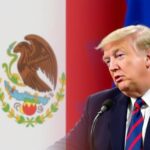Upcoming Tariff Announcements by President Trump: Key Considerations
President Trump may announce tariffs on Canada, China, and Mexico, including a 25% fee on the former two and a 10% duty on the latter, to address immigration and drug issues. Experts caution that such tariffs may spark inflation among consumer goods and lead to retaliatory tariffs by these nations, complicating trade relations further.
President Trump is reportedly poised to announce tariffs on Canada, China, and Mexico, as he signaled the possibility of imposing a 25% tariff on Canada and Mexico, and a 10% tariff on China as early as February 1. Economists warn that such measures could lead to inflation in consumer goods and slow economic growth. This initiative reflects his strategy of leveraging tariffs not only as trade tools but also to influence immigration and drug control policies.
For many reasons, Mr. Trump has threatened tariffs against several countries. His focus on Canada, Mexico, and China aims to persuade these nations to address the challenges of undocumented immigration and the drug trade, particularly fentanyl. Previously, he had threatened tariffs as high as 60% on Chinese imports to negotiate better trade terms and restrict illegal drug entry into the United States. His administration’s consistent use of tariff threats exemplifies a transactional approach to trade policy.
Mr. Trump has indicated that his administration might implement broad tariffs affecting various countries, potentially targeting specific imports from nations including Canada and Mexico. However, the exact structure and timeline of these tariffs remain unclear. Experts suggest that while he may communicate aggressive stances, not all proposed tariffs will be executed, thus leaving some uncertainty surrounding future trade policies.
Economists predict that moving forward with tariffs will likely evoke retaliation from other countries, particularly Canada and Mexico. Canada is expected to respond with parallel tariffs on U.S. imports, while Mexico might impose tariffs on agricultural goods. While Mr. Trump asserts that a tough trade policy will benefit American manufacturing, experts caution that such actions could strain international relationships and lead to economic repercussions.
The potential introduction of tariffs undoubtedly poses risks to American consumers, as firms impacted by tariffs often pass increased costs to consumers. This reality raises concerns about inflation rising due to continuous price hikes. Analysts warn that even a universal 10% tariff could lead to a 3% to 4% increase in consumer prices, thereby intensifying inflation pressures and complicating Federal Reserve monetary strategies.
The current discussions regarding President Trump’s potential tariffs against countries like Canada, China, and Mexico stem from his administration’s broader trade policy objectives. These proposed tariffs are touted as tools to address various issues, including immigration and illegal drug trade concerns, while simultaneously aiming to bolster domestic manufacturing. However, the economic consequences of implementing such tariffs—including inflation risks and retaliatory measures from other nations—are significant considerations for economic policy analysts and consumers alike.
In summary, President Trump’s potential announcement of tariffs against Canada, China, and Mexico signifies a continuation of his aggressive trade strategy. While these measures might be intended to achieve diplomatic concessions regarding immigration and drug policies, they raise profound concerns about potential retaliatory actions, inflation impacts on consumers, and the overall stability of U.S. trade relations. Analysts underscore the uncertainty surrounding the specifics and outcomes of these proposed tariffs amid a shifting economic landscape.
Original Source: www.cbsnews.com








Post Comment